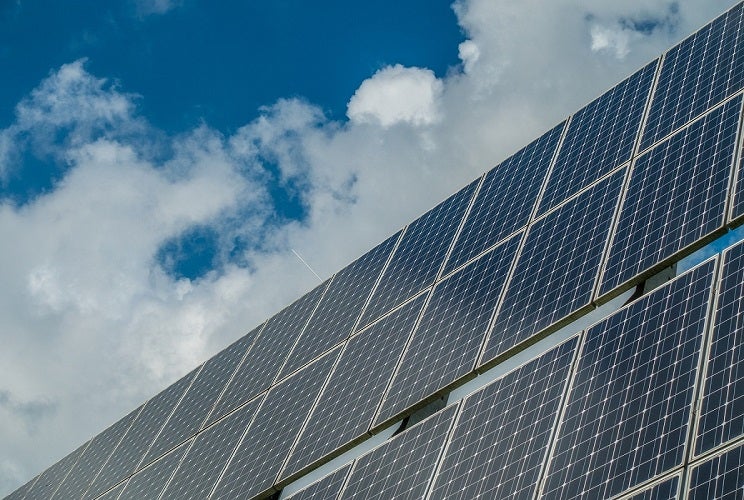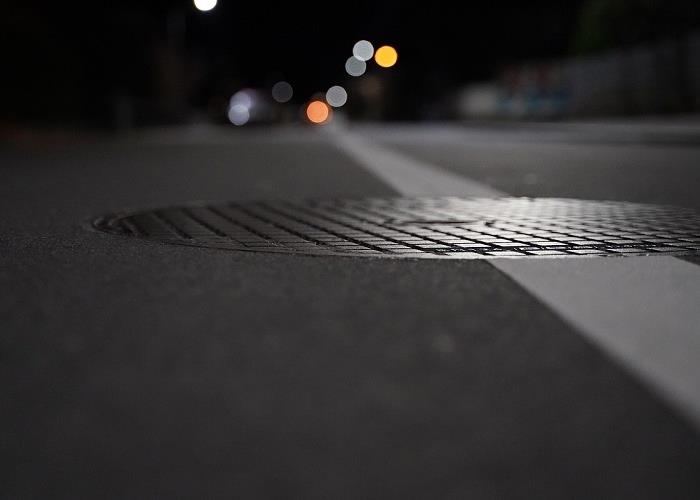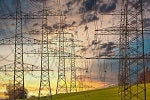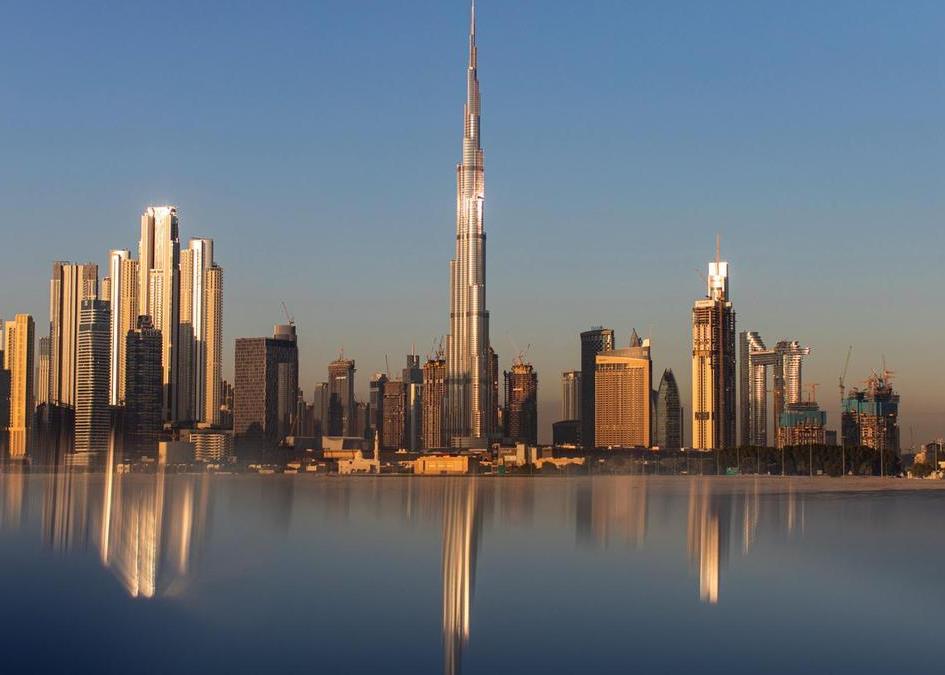Cairo beset by regional geopolitical storm
7 February 2024
 This package on Egypt also includes:
This package on Egypt also includes:
> More pain for more gain for Egypt
> UK and Egypt sign infrastructure agreement
> Familiar realities threaten Egypt’s energy hub ambitions
> Egypt nears fresh loan agreement with IMF
> ADQ and Adnec invest in Egypt hospitality group
> Egypt’s President El Sisi secures third term
> Egypt 2024 country profile and databank

Egypt is surrounded on all sides by geopolitical crises, from the Gaza conflict to the northeast and the related Houthi attacks on Red Sea shipping to the southeast, to civil strife in Libya and Sudan to the west and south.
Further up the Nile, Egypt is also engaged in a diplomatic tussle with Addis Ababa over the Grand Ethiopian Renaissance Dam (Gerd), which Cairo has unsuccessfully tried to derail for years over fears of the impact it will have on water flows down the Nile.
Domestically, things are more straightforward, at least on the surface. President Abdel Fattah El Sisi won another six-year term in December, with just under 90% of the vote.
But the turmoil beyond the country’s borders could yet cause domestic problems for El Sisi, given the impact on the already fragile Egyptian economy – all of which is creating new political pressures that could eventually force the government’s hand.
The attacks on Red Sea shipping have, according to IMF Portwatch, led to a halving of traffic through the Suez Canal, an important source of hard currency earnings for Egypt. The risk of large numbers of Gazans moving south into the already-troubled Sinai region – whether willingly or not – is another potential source of instability.
Given these risks, it is little wonder that Cairo has, along with Qatar, been the most prominent Arab country trying to resolve the Hamas-Israel war.
Soon after Hamas’ assault on Israel on 7 October, El-Sisi convened the Cairo Peace Summit on 21 October. Diplomatic activity has continued since then, with Egyptian General Intelligence Service head Abbas Kamel holding talks with Hamas leaders Khaled Mashal and Ismail Haniyeh and Israel’s lead negotiator David Barnea.
As yet, this activity has not delivered peace, but one security analyst said Cairo’s involvement was essential to any potential deal, more so than Qatar or other interlocutors. “A peace agreement can only come through Egypt,” they said.
In the meantime, Egypt has also been a vital hub for humanitarian aid, receiving numerous flights to El Arish International airport in northern Sinai, an hour’s drive from the Rafah crossing into Gaza. However, the delivery of aid from there into the Palestinian territory itself has been sporadic and limited.
President El Sisi has also had to fend off accusations against Egyptian state officials of systematic bribery both in the facilitation of moving aid into Gaza and for Palestinians seeking permits to exit the strip.
For all of these reasons, it is in Egypt’s interests to help bring about a swift resolution to the Gaza conflict, which should resolve the Red Sea shipping crisis too, but the republic’s problems to the south may be more intractable, with Cairo’s efforts to dictate events to date having been singularly unsuccessful.
Southern strife
In September, reacting to an Ethiopian statement that the final filling of the Gerd dam had been completed, Egypt’s Ministry of Foreign Affairs said the filling showed “a disregard for the interests and rights of the downstream countries and their water security” and was a “breach of legality”.
In March, Foreign Minister Sameh Shoukry appeared to leave open the possibility of a more muscular response from Cairo, when he said: “All options are open and alternatives remain available.” However, Egypt does not appear to have the appetite to turn such hard words into tough action.
A brutal proxy war between the two powers is currently being fought in Sudan between the Rapid Support Forces (RSF) led by Mohamed Hamdan Dagalo (known as Hemedti), who is close to Ethiopia, and the Sudanese Armed Forces (SAF) of President General Abdel-Fattah Burhan, who is close to Egypt.
A critical factor for Egypt in both the Sudan and Ethiopian situation is the role of the UAE, which has backed the RSF and has supported Ethiopia’s Prime Minister Abiy Ahmed. Abu Dhabi’s regional activism has caused tensions between Cairo and Abu Dhabi, but El Sisi knows he cannot afford to risk his financial relationship with Abu Dhabi being placed in doubt.
“Cairo is furious about this, but they are dependent on the UAE for funding,” said one regional political analyst.
That was evident in comments from Planning and Economic Development Minister Hala Helmy el-Said at the Asian Financial Forum in Hong Kong in late January, when she spoke about the cooperation between Egypt and the UAE in areas such as investment, capacity building and government performance. She pointed in particular to collaborations between the Sovereign Fund of Egypt and the Abu Dhabi government’s ADQ investment fund.
Financial aid
The economic and the political are interwoven in the domestic political arena too, but a fresh package of financial support from the Washington-based IMF may help El Sisi’s government.
An IMF team led by Middle East and Central Asia division chief Ivanna Vladkova Hollar was in Cairo in late January and early February and agreed the main policy elements of a further economic reform programme and finance package that could amount to $10bn or more.
The reforms could also bring further short-term shocks to the economy and its 109 million people – something both sides say they are aware of.
“The IMF team and the Egyptian authorities also agreed on the critical importance of strengthening social spending to protect vulnerable groups. This is important to ensure adequate living conditions for low and middle-income households that have been hit particularly hard by rising prices,” said Hollar in a statement at the end of the IMF visit.
However, any sign of protest is liable to be swiftly answered by Interior Ministry police and National Security agents, who are well-versed in curtailing the space for political debate.
The lack of room for critical voices was clear in the December presidential election. Leading opposition figure Ahmed Tantawy pulled out of the poll in December, claiming intimidation by the regime. Elections in Egypt are “neither free nor fair”, according to Washington-based Freedom House.
Nonetheless, a successor to El Sisi will have to emerge at some point. His recent electoral win means he will be in power until 2030. At that point, though, he will have to make way for someone else unless he engineers another change to the constitution that allows him to run again.
Exclusive from Meed
-
 Team offers $c1.29/kWh for 2GW Sadawi solar IPP project
Team offers $c1.29/kWh for 2GW Sadawi solar IPP project21 October 2024
-
 Ashghal tenders sewerage works
Ashghal tenders sewerage works21 October 2024
-
 Saudi Arabia to award 10.9GW of generation capacity
Saudi Arabia to award 10.9GW of generation capacity21 October 2024
-
 Khazna expects to build more 100MW-scale data centres
Khazna expects to build more 100MW-scale data centres21 October 2024
-
 Dubai Municipality seeks Tasreef partner
Dubai Municipality seeks Tasreef partner18 October 2024
All of this is only 1% of what MEED.com has to offer
Subscribe now and unlock all the 153,671 articles on MEED.com
- All the latest news, data, and market intelligence across MENA at your fingerprints
- First-hand updates and inside information on projects, clients and competitors that matter to you
- 20 years' archive of information, data, and news for you to access at your convenience
- Strategize to succeed and minimise risks with timely analysis of current and future market trends

Related Articles
-
 Team offers $c1.29/kWh for 2GW Sadawi solar IPP project
Team offers $c1.29/kWh for 2GW Sadawi solar IPP project21 October 2024
A developer team that includes UAE-based Abu Dhabi Future Energy has submitted the lowest bid for a contract to develop the 2,000MW Al-Sadawi solar independent power project (IPP) in Saudi Arabia.
The consortium, which includes South Korea's Korea Electric Power Corporation (Kepco) and China's GD Power Development, submitted a levelised cost of electricity (LCOE) of hals 4.847 ($c 1.29) a kilowatt-hour for the contract to develop the scheme, which is located in Eastern Province.
The second lowest bidder is a team that includes China's SPIC Huanghe Hydropower Development and France's EDF Renewables, which offered to develop the project for $C1.31/kWh.
Saudi Power Procurement Company (SPPC) received six proposals from companies for the contracts to develop and operate four solar photovoltaic (PV) IPP projects in Saudi Arabia in August.
The projects, which have a total combined capacity of 3,700MW, are being tendered under the fifth procurement round of the kingdom's National Renewable Energy Programme (NREP).
According to SPPC the lowest and second-lowest bidders in the remaining schemes under NREP round five are:
Al-Masaa solar IPP (Hail): 1,000MW
- L1: SPIC/EDF Renewables (France): $c 1.36/kWh
- L2: AlJomaih Energy & Water (local) / TotalEnergies Renewables (France): $c 1.40/kWh
Al-Hinakiyah 2 solar IPP (Medina): 400MW
- L1: SPIC/EDF: $c 1.51/kWh
- L2: Masdar/Kepco/Nesma: $c 1.57/kWh
Rabigh 2 solar IPP (Mecca): 300MW
- L1: AlJomaih Energy & Water / TotalEnergies Renewables: $c 1.78/kWh
- L2: Masdar/Kepco/Nesma: $c 1.89/kWh
Saudi utility developer Acwa Power was not among the 23 companies that were prequalified to bid for the fifth round of NREP projects.
US/India-based Synergy Consulting is providing financial advisory services to SPPC for the NREP fifth-round tender. Germany's Fichtner Consulting is providing technical consultancy services.
The round five solar PV IPPs take the total capacity of publicly tendered renewable energy projects in Saudi Arabia to over 10,300MW. Solar PV IPPs account for 79%, or about 8,100MW, of the total capacity.
Four wind IPPs, one of which has yet to be awarded, account for the remaining capacity.
SPPC is procuring 30% of the kingdom's target renewable energy by 2030. Saudi sovereign wealth vehicle the Public Investment Fund is procuring the rest through the Price Discovery Scheme. The PIF has appointed Acwa Power, which it partly owns, as principal partner for these projects.
The Saudi Energy Ministry recently said that the kingdom plans to procure 20,000MW of renewable energy capacity annually, starting this year and until 2030.
https://image.digitalinsightresearch.in/uploads/NewsArticle/12768211/main.jpg -
 Ashghal tenders sewerage works
Ashghal tenders sewerage works21 October 2024
Qatar’s Public Works Authority (Ashghal) has issued a tender for the construction of the remaining works for two packages of the Al-Kheesa foul sewer network.
According to Ashghal's website, the project packages are called C2018/7 and C2017/118.
It issued the tender on 9 October and expects to receive bids by 10 November. Asghal set the bid bond for the contract at QR1.7m ($467,000).
MEED understands the project is located in the Al-Wajba area and is expected to be awarded in March 2025.
It is one of the most recent infrastructure packages tendered by the authority, which oversaw the multibillion-dollar Local Roads and Drainage Programme (LRDP) in the run-up to the state's hosting of the Fifa World Cup in 2022.
LRDP includes more than 200 road and drainage schemes worth an estimated QR53.2bn ($14.6bn).
In September, Ashghal issued a tender for the construction of a road network in the Izghawa and Al-Themaid areas in the northwest of Doha.
The project involves the construction of a single- and dual-carriageway road network in the area. The overall project is being procured in two work packages.
https://image.digitalinsightresearch.in/uploads/NewsArticle/12767589/main1835.jpg -
 Saudi Arabia to award 10.9GW of generation capacity
Saudi Arabia to award 10.9GW of generation capacity21 October 2024

Principal buyer Saudi Power Procurement Company (SPPC) is expected to award the contracts to develop four gas-fired power plants and four solar photovoltaic (PV) projects over the next few weeks.
MEED understands the intention is to announce the preferred and reserved bidders for each of the contracts, possibly by late October or early November.
SPPC received six proposals from companies for the contracts to develop and operate four solar PV independent power producer (IPP) projects, which have a total combined capacity of 3,700MW, in August.
The project contracts were tendered under the fifth procurement round of the kingdom's National Renewable Energy Programme (NREP).
According to industry sources, the companies that submitted bids for the four PV contracts include:
- EDF Renewables (France) / Etihad Water & Electricity (UAE) / SPIC Huanghe Hydropower Development (China)
- Masdar (UAE) / Nesma Renewable Energy (local) / Korea Electric Power Corporation (South Korea)
- Jinko Power (Hong Kong) / Saudi Electricity Company (local)
- Aljomaih Energy & Water (Jenwa, local) / Total Energies Renewables (France)
- Engie / Kahrabel (France/ UAE)
- Alfanar Company (local)
The following solar PV projects and their capacities make up round five of the NREP:
- Al-Sadawi solar IPP (Eastern Province): 2,000MW
- Al-Mas solar IPP (Hail): 1,000MW
- Al-Hinakiyah 2 solar IPP (Medina): 400MW
- Rabigh 2 solar IPP (Mecca): 300MW
Meanwhile, SPPC received bids on 21 August for the contracts to develop and operate four combined-cycle gas turbine (CCGT) power generation plants in Saudi Arabia with a total combined capacity of 7,200MW.
The four IPP projects, each with a generation capacity of 1,800MW, are:
- Remah 1
- Remah 2
- Al-Nairiyah 1
- Al-Nairiyah 2
Remah 1 and 2, previously known as PP15, will be located in Saudi Arabia’s Central Region, while Al-Nairiyah 1 and 2 will be in the Eastern Region.
According to sources close to the projects, the teams that submitted bids to develop and operate the two CCGT IPPs are:
- Abu Dhabi National Energy Company (Taqa, UAE) / Jera (Japan)
- Acwa Power (local) / Korea Electric Power Corporation (South Korea) / Saudi Electricity Company (local).
https://image.digitalinsightresearch.in/uploads/NewsArticle/12767412/main1232.jpg -
 Khazna expects to build more 100MW-scale data centres
Khazna expects to build more 100MW-scale data centres21 October 2024

Register for MEED's 14-day trial access
The 100MW artificial intelligence (AI)-enhanced data centre being built in the UAE's northern emirate of Ajman is not the last for UAE-based data centre and cloud services provider Khazna Data Centres.
"In the near future, we will be announcing other projects on the same scale or larger than the Ajman data centre," Gregory Jasmin, the firm's senior director of business development strategy, tells MEED.
The executive says the 100MW data centre, once completed, makes Khazna Data Centres "by far the largest data centre developer and operator in the entire Gulf region".
MEED previously reported that London-headquartered construction firm Laing O'Rourke had started construction on Khazna's latest data centre project in Ajman.
The new facility is expected to cost about AED1bn ($272m) and be completed within 15 months. Etihad Water & Electricity Company will supply power to the Ajman data centre.
Jasmin says the company exceeded its capacity target of 300MW by the end of 2023, up from 126MW in early 2022.
The firm has grown significantly since 2020, when it had a capacity of just 40MW, following the 2021 merger of the data centre divisions of Khazna’s parent firm G42 and telecommunications firm e&, previously known as Etisalat.
The company is also expanding its presence in other markets, including Saudi Arabia, Egypt and Kenya.
"By the end of this year and the start of Q1 next year, we will be in many [more] geographies," says Jasmin.
Asked about the top driver for the company's future expansion, the executive says: "AI, AI and more AI."
He adds: "This is based on what the [UAE] leadership wants, which is to have the UAE at the forefront of the AI revolution and with G42, we sit at the core of the infrastructure that is needed for AI.
"For many years, we were always looking to the West to see what we can do, but now we want to take the lead in building the infrastructure that is powering AI here in the UAE as well as globally," says Jasmin.
As things stand, the government's AI push has increased interest in building data centre capacity, if not changed the landscape entirely for Khazna.
In June 2022, the firm's CEO Hassan Al-Naqbi told MEED that increased digitalisation by government entities and enterprises, as well as the adoption of school- and work-from-home practices, mean that the Middle East region will continue to drive double-digit growth in demand for data centre services.
In addition, the general mandate for regional governments to retain data within their national jurisdictions is also a major driver for the growth of data centre services in the region, which was nearly double the global average at the time.
Green data centre
Known for being a major energy consumer, there is a growing awareness of how data centres can be made more sustainable or greener, particularly due to the cooling requirements, which are especially crucial in the Gulf region.
Jasmin says in some countries, such as Kenya, a 100% renewable energy powered data centre is now feasible.
Khazna's facility in Kenya is powered by 100% renewable geothermal energy and can go from a scale of 100MW up to 1GW, because "we are located in a green energy park that is fed by renewable energy currently at 900MW, but with the potential to grow to up to 10GW".
Related reads:
https://image.digitalinsightresearch.in/uploads/NewsArticle/12767183/main.gif -
 Dubai Municipality seeks Tasreef partner
Dubai Municipality seeks Tasreef partner18 October 2024
Register for MEED's 14-day trial access
Dubai Municipality has issued a tender notice for a delivery partner to develop and implement a model tailored to the needs of the Tasreef programme, Dubai's planned AED30bn ($8.16bn) rainwater drainage network project.
MEED understands that the request for proposals targets technical and engineering advisory companies.
Dubai Municipality expects to receive bids by 7 November, Fahad Al-Awadhi, director of drainage system and recycled water projects department, Dubai Municipality, said in a recent social media post.
According to Al-Awadhi, the Tasreef programme consists of three streamlines to enhance the effectiveness of Dubai's stormwater system:
- Improvement of infiltration and sustainable drainage systems and artificial intelligence (AI) applications
- Upgrade of stormwater systems in Deira, Bur Dubai and Jebel Ali
- Proposed stormwater tunnels in Deira and Bur Dubai, as well as link tunnels in Jebel Ali
In addition, the Tasreef programme will address storm event management, including raising awareness about storm impacts, implementing proactive risk control measures, developing marketing and procurement strategies and establishing communication plans.
Al-Awadhi added: "The proposed stormwater tunnels, links and terminal pump stations aim to enhance the stormwater network’s capacity by 700% to handle up to 65 millimetres of rainfall per day. This programme represents the largest rainwater collection project in a single system within the region."
An early study is under way for Tasreef, which Sheikh Mohammed Bin Rashid Al-Maktoum, UAE Vice President and Prime Minister and Ruler of Dubai, approved in June.
A source familiar with the project said that Dubai Municipality is inclined to consider a public-private partnership (PPP) procurement model for the project.
Sheikh Mohammed's approval of Tasreef came two months after a storm in April inundated Dubai, causing widespread flooding and damage to infrastructure and property in certain areas.
The project will raise the emirate-wide drainage network’s capacity to more than 20 million cubic metres of water a day. It is hoped that it will meet Dubai's needs for the next 100 years.
The project is a continuation of drainage projects launched by Dubai in 2019, covering the Expo Dubai area, Al-Maktoum International Airport City and Jebel Ali.
The rainwater drainage capacity through tunnels will reach 20 million cubic metres a day, with a flow capacity of 230 cubic metres a second.
According to data from regional projects tracker MEED Projects, the Dubai Municipality Deep Tunnel Storm Water System (DTSWS) was first announced in 2014.
It has several components, and the first two packages covering Jebel Ali were awarded in 2017 and 2018 and completed in 2022.
The remaining packages of the master plan were on hold before the government's announcement on 24 June.
The DTSWS project is separate from the Dubai Strategic Sewage Tunnels project, which is being developed under a PPP contracting model.
https://image.digitalinsightresearch.in/uploads/NewsArticle/12753886/main.jpg

